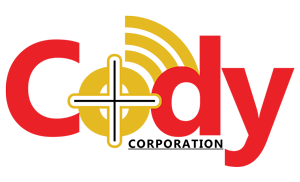Laser levels point or rotate to create a reference point, line, or plane, and are used in construction to determine and set the elevation of construction elements. Laser levels facilitate accurate and fast level operations over a wide area. Once set up, levelling work can be performed by one person.
When used outside, laser levels are almost always used with a receiver attached to a grade rod or mounted on heavy equipment for laser machine control. When used for inside work, a visible beam often guides construction activity, but sometimes a receiver is used for large interior work areas. Rotary laser levels used for machine control are more powerful to project the reference plane at a greater distance.
The price of new laser levels is dictated by power, features and durability. Entry level rotary laser levels by the quality producers can be purchased for as low as $500, with the higher end units ranging up to $1400. Over the past decade laser level prices have dropped dramatically, while power, accuracy and features have increased, making these instruments an incredible value in terms of the productivity that can be achieved for a relatively small investment.
Common Specifications
Laser level technical parameters, specifications and characteristics include the following:
- Auto-levelling capability: Most new laser levels automatically level when the instrument is set up within the auto-levelling range (usually ± 5°), and this feature, now broadly used, may be the most important advancement in laser levels. Auto laser levels make use of a compensator, which ensures that the line of sight is always horizontal regardless of whether or not the laser unit is level.
- Accuracy at a specified distance from transmitter – typically ± 5mm at 30 metres for the lower priced units and more accurate ( ± 1mm at 30 metres) for the higher end units
- Beam power > operating range – distance receiver can be from transmitter (175m for the lower priced units and up to 700m+ for the higher end units).
- Light source (visible (green/red) or invisible (infra red) – Most laser levels are red beam, but green is often used for indoor units as the green beam is twice as visible.
- Operating temperature range – More expensive units have a broader temperature range to allow use under more extreme temperature conditions.
- Weather protection standard – There are standards that define the degree the unit is able to withstand adverse environmental conditions (moisture, dust). Lower priced units are often manufactured to IP54 standard (water resistant) where the higher priced units are to a higher standard such as IP66 (dust and waterproof).
- Case/enclosure ruggedness – While careful handling is always recommended, laser levels can be exposed to rough conditions during transportation and job site use, so a rugged enclosure is beneficial, including protection of the lighthouse (structure, glass windows). Generally, the higher end laser levels have a higher integrity case and better lighthouse protection, and the higher quality internal components are dampened from the enclosure to provide greater shock resistance.
- Fixed or rotating beam; speed Most new laser levels are rotary laser levels. The more advanced auto laser level models allow the used to set the rotation speed from 0 rpm (fixed point) up to 600 rpm, either incrementally or variable settings
- Power supply: May be alkaline or rechargeable (or allow either), with rechargeable preferable if the unit is used often and/or for extended periods of time.
Common Features
Grade match is a feature that allows the laser plane to be sloped on one axis (and on some models, both axes). This feature allows the user to project a grade from the instrument set-up location to a remote point, and once the grade is matched at the remote point it can be projected across a wide area. While the % of grade is not known (though it could be calculated if the distance was known), this feature does allow certain grade work to be performed. With a one person operation, this grade match function is easily performed if the laser level has a remote control (sometimes optional).
Out of level warning light lets the user know that the unit was disturbed and is no longer level; some systems allow the warning to be indicated at the receiver as well. Some units will respond to an out of level warning signal by stopping laser rotation and turning the unit off.
Suitability for machine control is largely defined by a more powerful laser beam that provides the greater operating range generally required for earthwork activity using machine control.
Remote control capability: Not all laser levels are enabled with remote capability (and if enabled a remote control is usually optional) and is not needed for most uses, but is of great help when using the grade match function and one person is performing the task. Note that the range of remote controls for laser levels is usually about half the operating range distance.
Temperature compensation is an advanced feature that minimised the effects of temperature on laser output and beam and auto-levelling stability.
Low battery warning lets the user know that power is running low, and this feature is included on many units.
The Best rotary laser levels and Manufacturers
The highest quality rotary laser levels are from Trimble Spectra Precision, Trimble Apache, Proshot, Geomax, Leica, AGL, Agatec and Topcon, as they invest heavily in research and development are the industry drivers of product innovation. Used units by these manufacturers that have been well cared remain a good value if bought from a good source. There are many additional firms that produce new instruments, and many have specific product niches and price ranges (mainly on the low end). Buyers should also be aware of the growing proliferation of inexpensive, often substandard equipment in the marketplace. With laser levels and other surveying instrument, there is an extricable link between quality and price, so you definitely get what you pay for.
